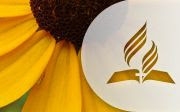 Our time away from Milton-Freewater is drawing to a close. We have only three more nights before we fly away from Scotland, and only two are here at Clachan Seil at Ardara Cottage. Sensing how quickly time flies, our hosts, the Rae's, offered us one last adventure: a trip on their sailboat, the "Weaver" to the Garvellachs and the Corryvreckan Whirlpool. On Sunday, after worshiping together, we donned wet-weather, sailing gear, and boarded the "Weaver".
Our time away from Milton-Freewater is drawing to a close. We have only three more nights before we fly away from Scotland, and only two are here at Clachan Seil at Ardara Cottage. Sensing how quickly time flies, our hosts, the Rae's, offered us one last adventure: a trip on their sailboat, the "Weaver" to the Garvellachs and the Corryvreckan Whirlpool. On Sunday, after worshiping together, we donned wet-weather, sailing gear, and boarded the "Weaver".(Interestingly after services, a newly retired couple who had moved to Seil got to talking to us. As a child the man had an aunt who took him and his brother to the Adventist church near their home. His brother became an Adventist pastor. He was fascinated to meet an Adventist pastor in a Presbyterian church. "Such a small world!", he kept saying.)
Fortunately, this was as calm a day as one could ever ask for, so absolutely no motion "queasiness". It fact, it was so calm, that we motored there and back rather than unfurling the sails, and they could even turn over the helm to an absolute neophyte. :-).

But the goal was to visit an ancient monastery on one of the "Isles of the Sea" (the meaning of Garvellachs) where an early-Christian community of Irish monks formed their base for outreach in the 500's AD. It is also the legendary burial site of St. Columba's mother, Eithne. Although not totally intact, one of their famous rock "beehive" huts still stands. These rock huts were impervious to rain (and to say that on a western Scottish island means something!) and some even say to wind. No mortar was used, just flat stones, and they've held together for 1500 years!

It was amazing walking around their ancient village, and then up to a gap in the crest of the island, from which we could look down at the rock shelf just higher than the waves on this calm day. Such dramatic views.

Together, we prayed up at Eithne's grave for God to continue finding people who would carry the good news of Jesus to their own corners of the world, and beyond. How wonderful it will be when God's work is done and Eithne, with her son Columba, can stand together before their Creator on that great Resurrection day.

When we scrambled over the shore rocks to get back onto our inflatable dingy, (I'll let Vonnie describe her bravery), we headed south of Scarba to the sound between it and Jura. There lies the world's biggest whirlpool, Corryvreckan. Robert told us, as we motored quietly along, how the British Navy once sent a frigate through the sound at the wrong time and nearly lost it! He reassured us that "today" all conditions were ideal. And he was right. And still it was impressive. Seeing the huge "boils" of water, many times bigger than our sailing boat, and seeing the white caps that would appear in patches, on a perfectly calm day, reminded us of what might be when the tide is even faster and the winds are at gale force. Apparently the underwater topography includes a pinnacle that helps cause the eddies and currents that can take a vessel totally out of control.

Another memory from the past is that a local sailer used his knowledge of Corryvreckan to survive a Viking raid. While he successfully made his way past the whirlpool, the persuing Viking raiders were all lost in its swirls! And the name of the whirlpool remembers another young Norwegian, "Vreckan", who lost his life to the whirlpool trying to win the hand of a local chieftain's daughter.
If all this makes it sound like we have been enjoying our sabbatical to the fullest, then you are getting the right idea. This has been an experience worth a lifetime of memories.
As we think (and even dream) about returning, it is with the awareness that the stream of life has continued while we have been away. And we will want to hear your stories from Summer 2008.
We learned from Debra's weekly "Church Life" email that dear Don Portenier has passed away. Our hearts go out to Etta as she faces life without him. I will be anxious to find out what happened to this dear veteran.
For those who live in or near the Walla Walla Valley, I can say, "See you soon!" We are scheduled to fly in on Sunday morning the 21st.
(And once again, I want to thank Autostitch demo for allowing me to weave photos together into a panorama. http://www.cs.ubc.ca/~mbrown/autostitch/autostitch.html And I will encourage viewers to click on any photo you want to see more closely. Most will enlarge to allow looking at details.)























